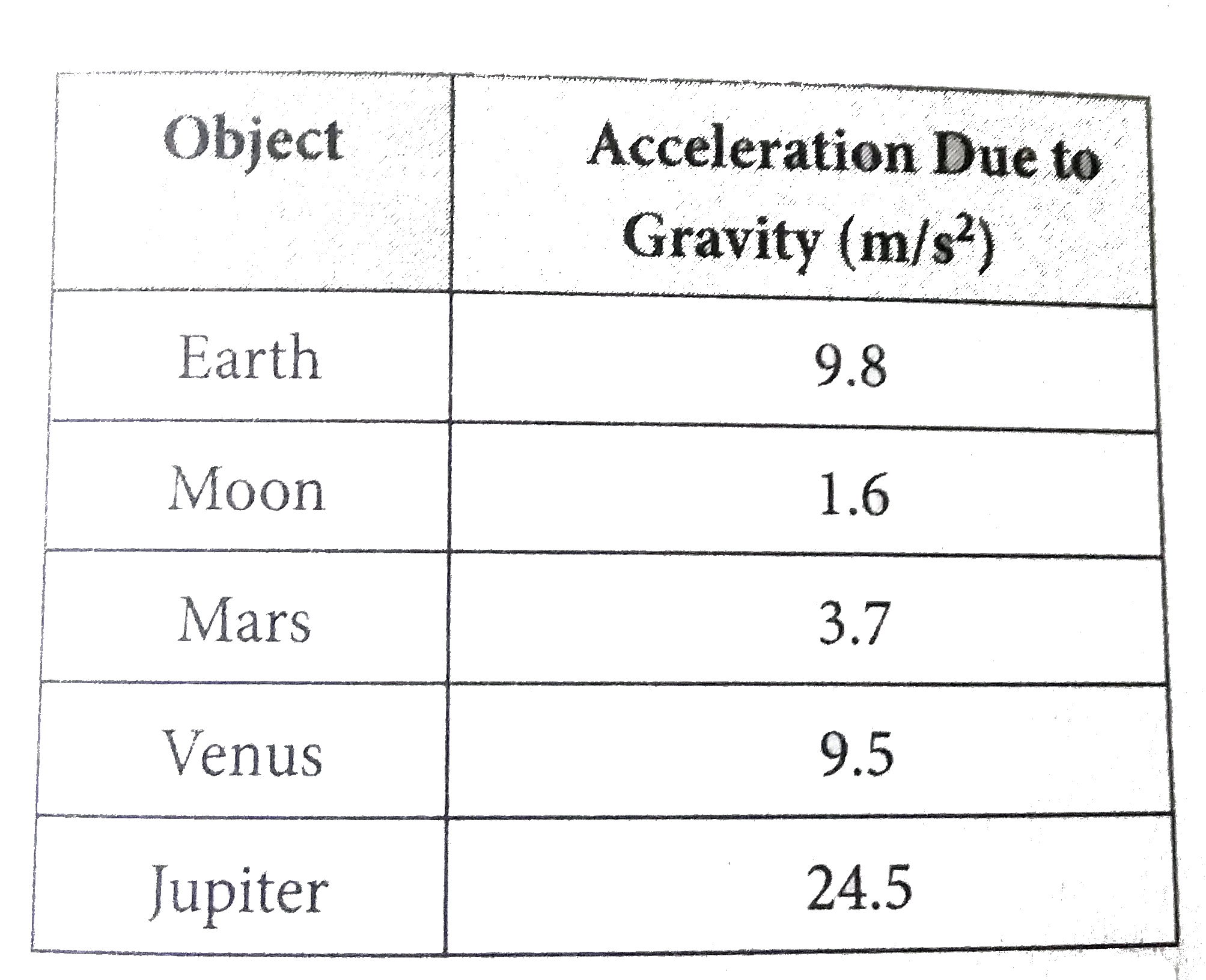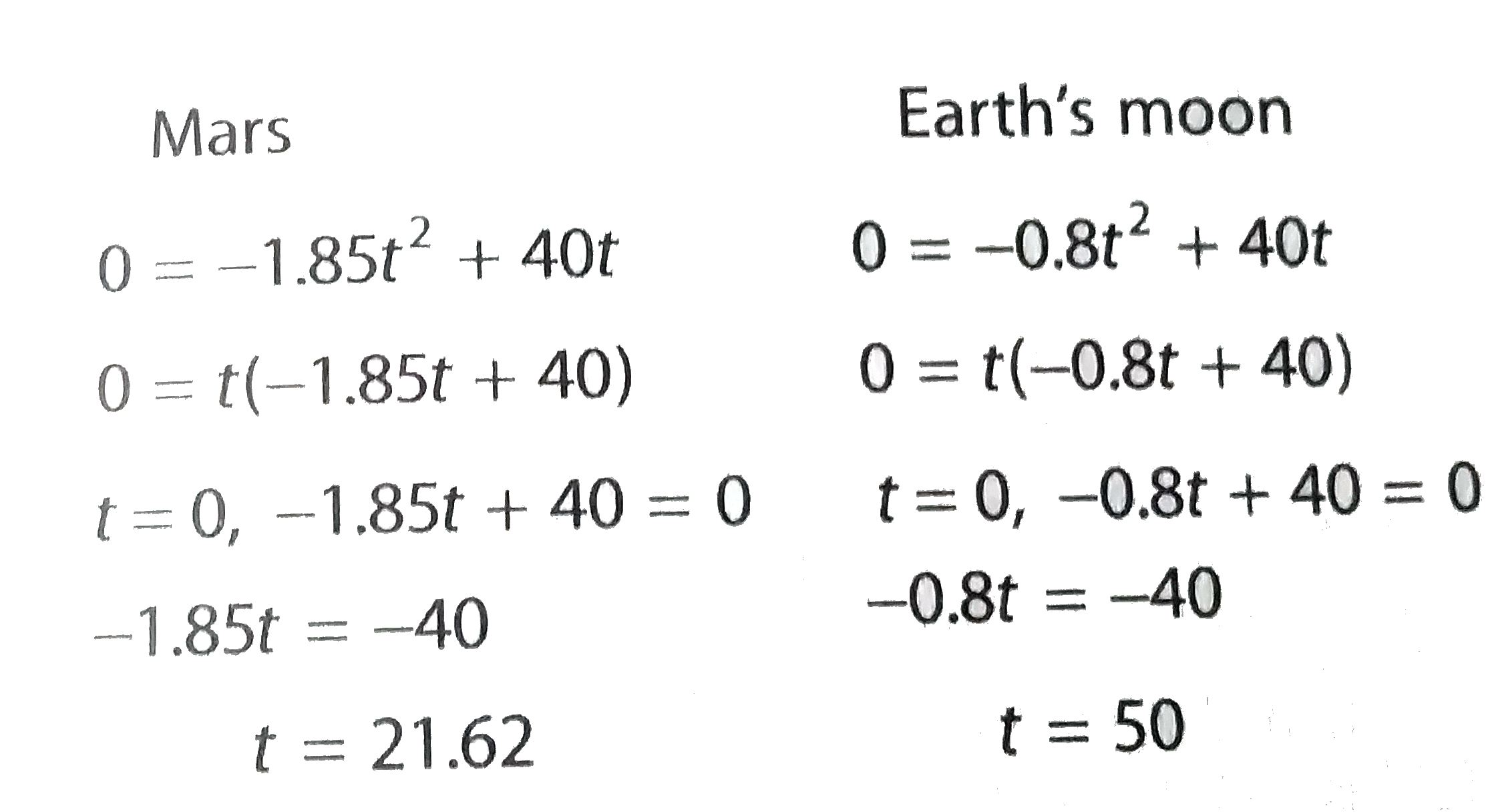
The approximate height h of an object launched vertically upward after an elapsed time t is represented by the equation h=12at2+vot+ho, where a is acceleration due to gravity, vo is the object's initial velocity, and ho is the objects initial height. the table aabove gives the acceleration due to gravity on Earth's moon and several planets. If two identical objects launched vertically upward at an initial velocity of 40m/s from the surfaces of Mars and Earth's moon approximately how many more seconds will it take for the moon projectile to return to the ground than the Mars projectile?
21
28
36
50
The correct Answer is:B
Difficult: Medium
Category: Passport to Advanced Math/ Quadratics
Strategy Advice: For a question like this, you'll need to interpret what is being asked for. Here, "to reach the ground" means that the height, h, eqauls 0, so your goal is to find the times (solve for t) when h=0 for the two projectiles,and the find the difference between them
Getting to the Answer: You know both projectiles begin at their respective surfaces and will be launched vertically at 40m/s, so ho=0andvo=40 for both . According to the table acceleration due to gravity on Mars is 3.7m/s2, so the final for the height of the Mars projectile is hMars=−1.85t2+40t. Similarly, acceleration due to gravity on the moon is 1.6m/s2, which makes the equation for the height of the moon projectile hmoon=−0.8t2+40t. Substitute 0 for h in each equation, and solve for t via factoring as follows:

At t=0, the objects have not yet been launched, so disregard this value of t. Subtract the other values you found to get to the difference between the landing times, 50−21.62=28.38 seconds. The closest answer choice is (B).
You could also graph the equations in a graphing calculator and use the trace or zero commands to determine when h=0.
Topper's Solved these Questions
Similar Questions
The displacement of a body is given by s=12gt2 where g is acceleration due to gravity. The velocity of the body at any time t is
View SolutionA projectile of mass m is thrown vertically up with an initial velocity v from the surface of earth (mass of earth = M). If it comes to rest at a height h, the change in its potential energy is
View Solution
Knowledge Check
- Question 1 - Select One
An object lauched upwards at an angle has parabolic motion. The height h, of a projectile at time t is given by the equation h=12at2+vyt+h0, where a is the acceleration due to gravity, vv is the vertical component of the velocity, and h0 is the initial height. Which of the following equations correctly represents the object's acceleration due to gravity in terms of the other variables ?
Aa=h−vvt−h0tBa=h−vvt−h02t2Ca=2(h−vvt−h0)t2Da=t√2(h−vvt−h0) - Question 2 - Select One
h=−4.9t2+25t
The equation above expresses the approximate height h, in meters, of a ball t seconds after it is launched vertically upward from the ground with an initial velocity of 25 meters per second. After approximately how many seconds will the ball hit the ground?A3.5B4.0C4.5D5.0 - Question 3 - Select One
The distance a free falling object has traveled can be modeled by the equation, d=12at2 where a is acceleration due to gravity and t is the amount of time the object has fallen. What is t in terms of a and d?
At=√da2Bt=√2daCt=(da2)2Dt=(3da)2
A body is projected vertically upward with an initial velocity u. If acceleration due to gravity is g, find the time for which it remains in air.
View SolutionA ball is thrown vertically upwards. It goes to a height 20 m and then returns to the ground. Taking acceleration due to gravity g to be 10m s−2 ?, find the initial velocity of the ball
View SolutionIf ge,gh and gd be the acceleration due to gravity at earth’s surface, a height h and at depth d respectively . Then:
View SolutionTwo bodies are thrown vertically upwards with their initial velocity in the ratio 2:3. Then the ratio of the maximum height attained by them is
View SolutionAssertion : An object may fall with a constant velocity.
Reason : This happens when acceleration of the object is equal to acceleration due to gravity.View Solution

